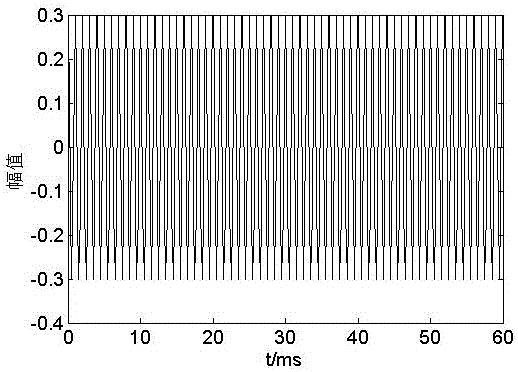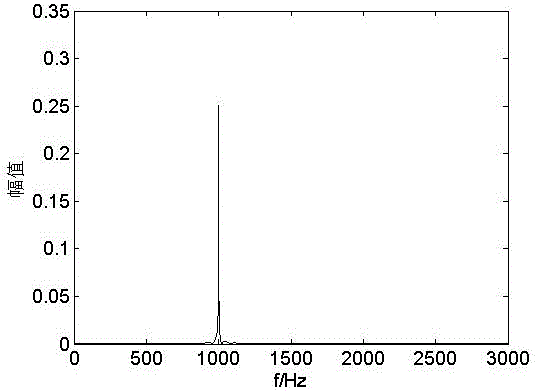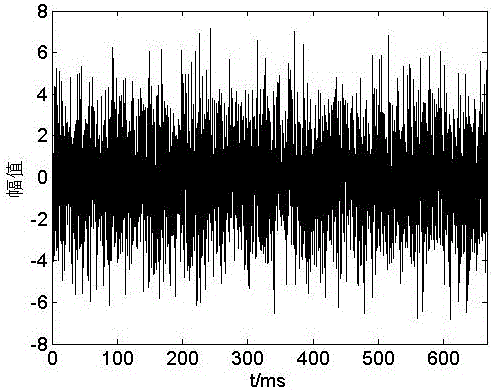Stochastic Resonance Based High Frequency Weak Signal Detection Method Based on Interpolation
A weak signal detection and stochastic resonance technology, applied in the field of signal detection, can solve problems such as increasing the difficulty of system design, increasing sampling difficulty, and limitations
- Summary
- Abstract
- Description
- Claims
- Application Information
AI Technical Summary
Problems solved by technology
Method used
Image
Examples
Embodiment Construction
[0015] Below in conjunction with specific embodiment the present invention is described in further detail:
[0016] 1. The principle of sampling rate improvement based on interpolation
[0017] Interpolation and decimation are two commonly used methods for sampling rate conversion in signal processing. Discrete signals can be increased by interpolation (interpolation). For the discrete sample signal obtained by downsampling at the Nyquist sampling rate, between every two sample values, a linear (non-linear) interpolation method is used to insert I-1 values at equal intervals to form an upsampling sequence: x s (n)=s(nT x ), refer to figure 2 . where s(n) is a discrete sample signal, T x =T s / I is the interpolator output ascending sequence signal x s (n) sampling period, T s is the sampling period of the input signal s(n). The interpolator compresses the spectrum of the original signal by I times along the ω axis, that is, the interpolated signal spectrum is 1 / I of ...
PUM
 Login to View More
Login to View More Abstract
Description
Claims
Application Information
 Login to View More
Login to View More - R&D
- Intellectual Property
- Life Sciences
- Materials
- Tech Scout
- Unparalleled Data Quality
- Higher Quality Content
- 60% Fewer Hallucinations
Browse by: Latest US Patents, China's latest patents, Technical Efficacy Thesaurus, Application Domain, Technology Topic, Popular Technical Reports.
© 2025 PatSnap. All rights reserved.Legal|Privacy policy|Modern Slavery Act Transparency Statement|Sitemap|About US| Contact US: help@patsnap.com



